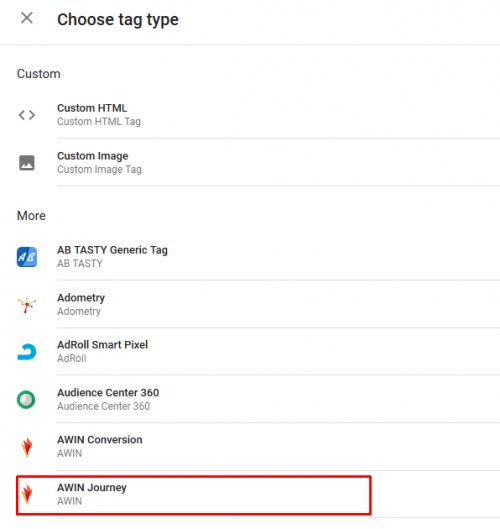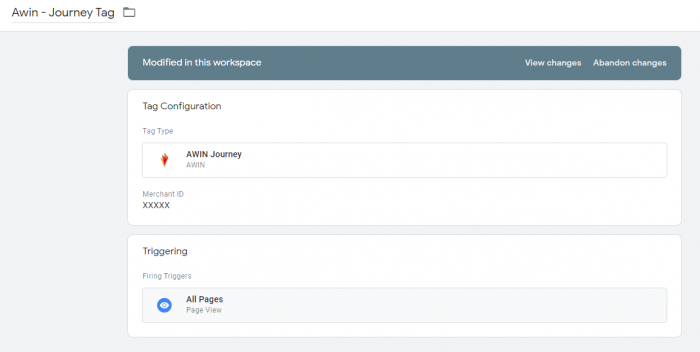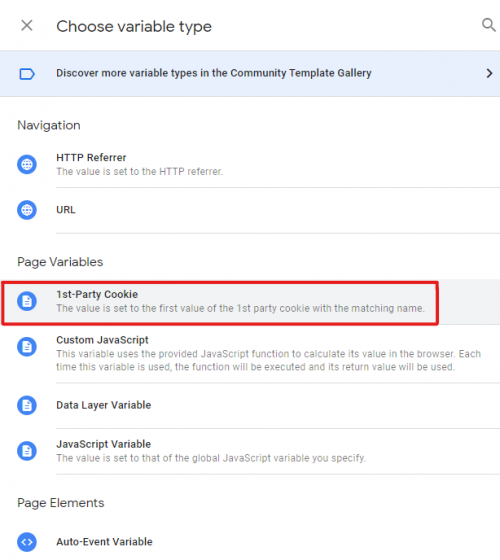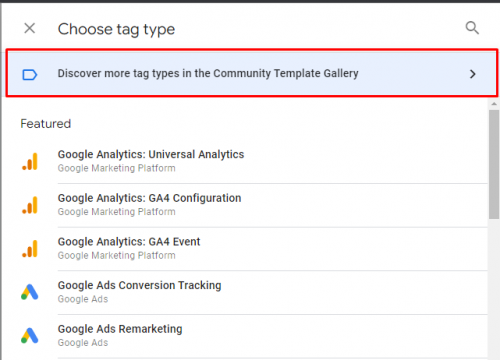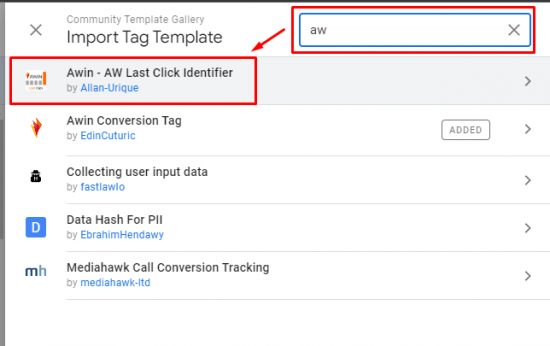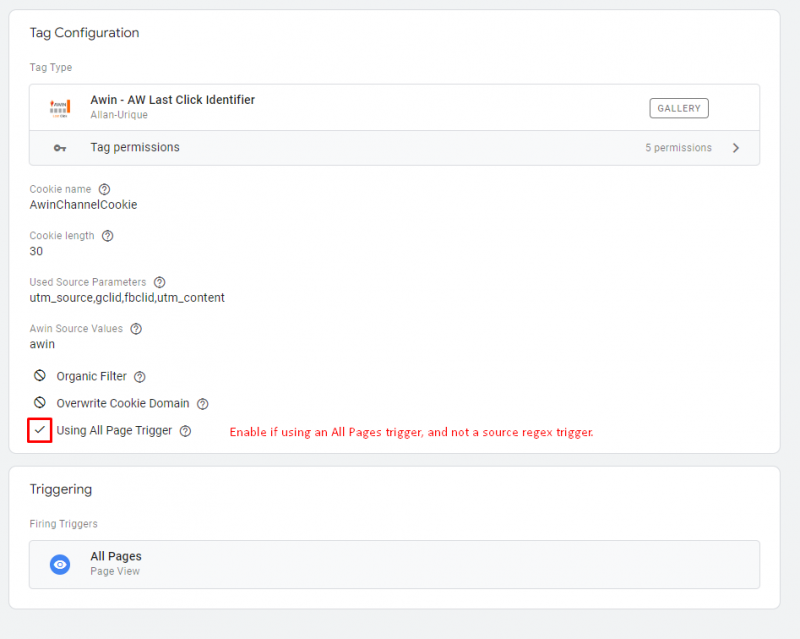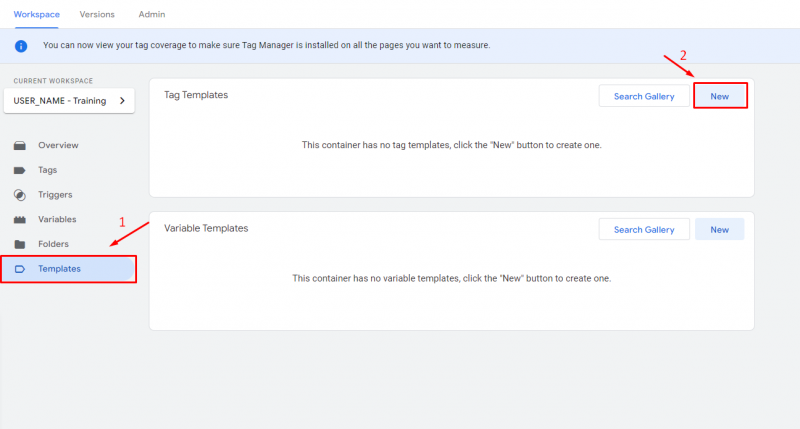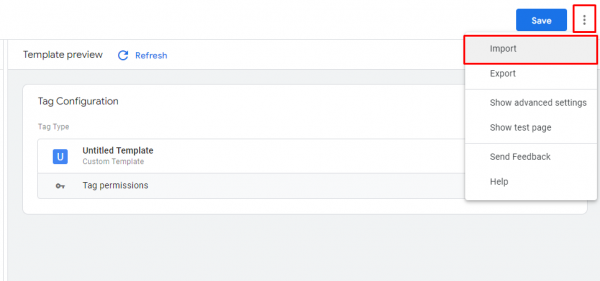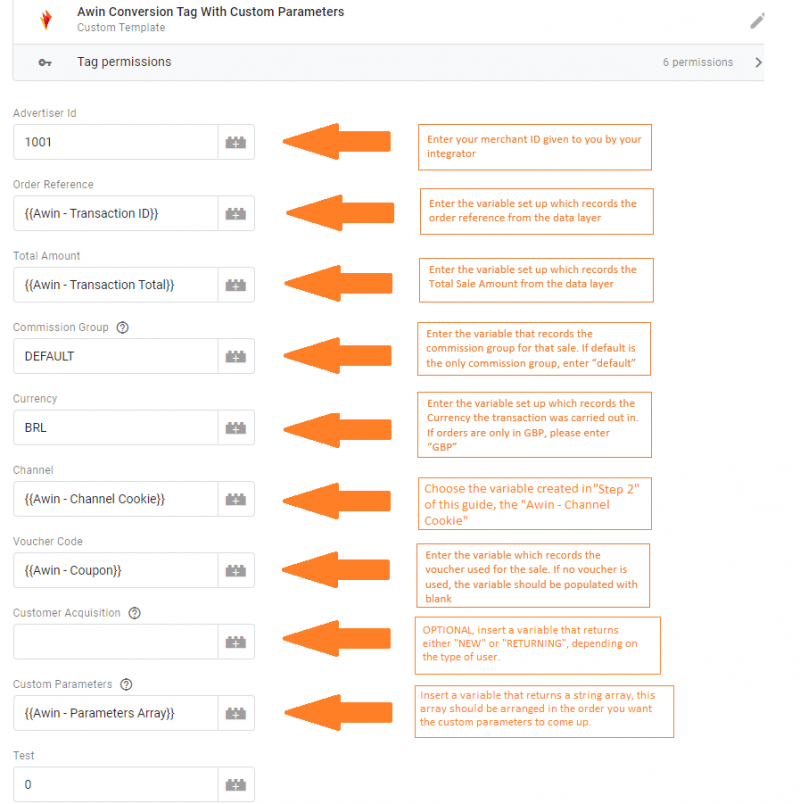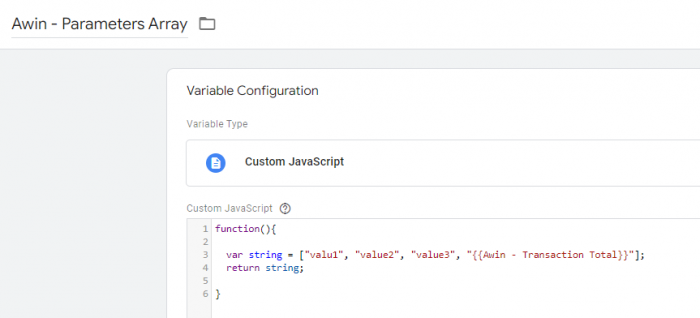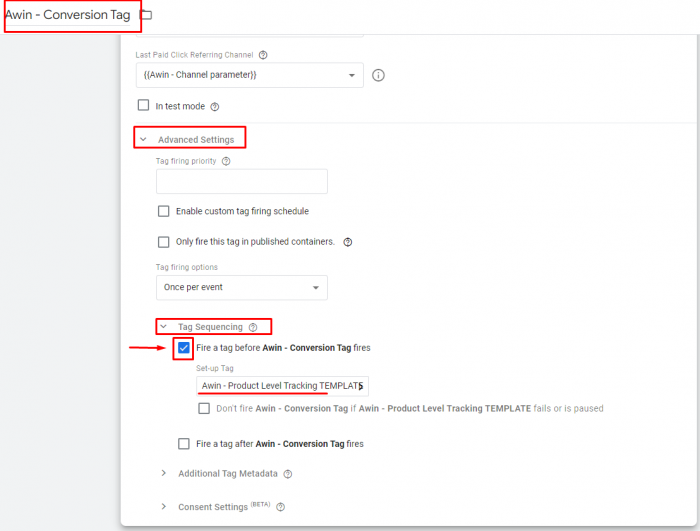GTM UnconditionalFiring CustomParameters EN
From Wiki
Contents |
[-] Google Tag Manager - Template Integration
Google Tag Manager - Template Integration
Step 1 - Installing the Journey Tag
The Awin Journey Tag is a JavaScript library that contains all the necessary functions for the Awin tracking to work as expected.
The Journey Tag NEEDS to fire on all possible landing pages of your website! We ask this is done, because the Journey Tag is responsible for the creation of a first party cookie when the user reaches the website. As the user can enter the website through multiple possible landing pages apart from the website's home page, we need to cover all entrance possibilities, therefore, we need the Journey Tag to fire on all pages.
If the user enters through a page, that does not contain the Journey Tag, we won't measure anything.
1) Navigate to "Tags"
2) Click “New” and choose the ‘Awin Journey’ tag.
4) Enter your advertiser ID provided by your Integrator
5) Select "All Pages" as the trigger
6) Name and save this tag appropriately
Step 2 - Automatic de-duplication and the Channel Parameter
This allows Awin’s conversion tag to identify which was the last paid media to generate the last click in the user’s journey before the checkout, this way, Awin’s platform can determine which transactions came from Awin and which didn’t, thus having an automatic de-duplication performed.
1) Create a new variable and name it “Awin - ChannelCookie”, this should be a First Party cookie variable:
2) Name the cookie this way “AwinChannelCookie”:
3) Navigate to the "Tags" tab, and create a new tag
4) Click on the "Discover more tag types in the Community Template Gallery" button.
5) Search for "AW", and select the "Awin - AW Last Click Identifier" tag template:
6) Add it to your workspace and accept the permissions.
7) Use an "All Pages" trigger.
8) Enable the "Using All Pages Trigger" checkbox.
DO NOT update or change any information in this tag, unless advised by you Integrator. It already comes ready to work with default industry parameters and values.
Step 3: Define the Awin sale tracking
1) Download the Awin - Conversion Tag with Custom Parameters template here.
2) Navigate to the "Templates" tab, and create a new template:
3) Click on the menu icon located at the top right corner of the screen, and import an existing template.
4) Select the previously downloaded file Awin Conversion Tag With Custom Parameters.tpl, and hit "Save".
5) Create a new tag, and select the previously created template.
6) Defining you DataLayer values, in case you don't know how to map DataLayer variables, here is a guide you can follow on How to map DataLayer variables in GTM
3) Select the trigger that fires once a conversion or the desired event occurs. (The "success" page for conversions, or an confirmation event for leads).
4) Click ‘Save’.
Obs: Create a Custom JavaScript variable that returns an array of strings with the values you want added to the tracking call. This variable should be sent in the "Custom Parameters" field of the Awin Conversion Tag.
Here is an example of how the variable could look:
5) Click ‘save’ and you should now have two Tags listed in the Tags table.
Step 4 - Product Level Tracking (PLT)
This step should only be followed by e-commerces, if you do not have an e-commerce, please ignore this step.
Product Level Tracking allows the advertiser to generate much detailed deports, it shows the performance for each product in the shopping cart individually, this is specially relevant for e-commerces.
1) Download the Awin - Product Level Tracking template here, and extract the "Awin - Product Level Tracking.tpl" file to somewhere in your computer, like the desktop for example.
2) Navigate to the "Templates" tab, and create a new template:
3) Click on the menu icon located at the top right corner of the screen, and import an existing template.
4) Select the previously downloaded file Awin - Product Level Tracking.tpl, and hit "Save".
5) Create a new tag, and select the previously created template.
6) Setup the tag's variables with the correct information. If your products array does not use the default property values (“id”, “name”, “quantity”, “price”, “category” or “sku”), enable the "Override Default Product Properties" checkbox and inform the correct values.
![]()
7) This tag shouldn't have a trigger, instead, open the "Awin - Conversion Tag" previously created, and use the tag sequencing to fire this tag before the Awin Conversion Tag, like so:
Step 5 - Tests
1) All done! Now just publish the changes!
2) You can follow this guide on How to Test the Awin Tags or contact your Integrator for further assistance!

